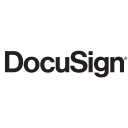Paperless office: How can I digitise administrative documents?
The paperless office is an essential part of the digital transformation of companies. However, the development of laws and the increasing number of software can make this task difficult.
The most digitised administrative document to date is the invoice. It is time to make other important documents available in digital form as well. The digital signature is a key to the successful digitisation of business documents such as commercial and business letters. It simplifies document management throughout the entire life cycle of documents and at the same time ensures their legal validity.
In this article, you will learn how to digitise administrative documents step by step, sign them online in a legally secure manner and archive them electronically.
Digitisation of documents - what is it actually?
The digitisation of documents involves replacing physical documents and information media with digital files. This is done by:
- Digital copies of administrative documents that already exist in paper form.
- Using specialised tools to create, edit, save, exchange and sign documents.
Which documents can be digitised?
The digitisation of administrative documents and invoices is one of the biggest challenges of the digital transformation of companies. Accounting is also increasingly switching to electronic documents.
The following types of documents are among those affected:
- Business documents: Quotations, orders, contracts
- HR documents: payslips, employment contracts and contract amendments
- Mandates and authorisations: for sales, management, SEPA, etc.
The goal? Paperless! - The challenges of digitalisation
Why digitise documents? The advantages of the paperless office
- Time savings: The processing time for documents is significantly reduced.
- Easier flow of information: Within the company or when communicating with customers and partners, the exchange of information is simplified.
- Increased collaboration: Teamwork is strengthened through shared access to documents.
- Centralisation: Information and files are collected in one place thanks to electronic document archiving.
- Traceability: The document history becomes more transparent and the background of each document is traceable and easily recognisable.
- Cost benefits: The costs for paper, printing and postage are eliminated or significantly reduced.
- More order in the office: In a paperless office, there are fewer paper files and filing cabinets. This makes it easier to find documents.
- Document security: Your data is secured in compliance with legal regulations and strict security requirements. From electronic signatures to digital archiving.
Digitise documents... and then what? Everything you need to know about managing digital documents
Electronic signature of documents
The electronic signature is an important step in the digitisation process and takes place before documents are stored and archived. This step requires (even more than others) the discarding of old, analogue habits.
The eIDAS Regulation defines several levels of electronic signatures. This standard has been mandatory throughout the EU since 1 July 2017.
The guarantee levels of the electronic signature are as follows
- Simple electronic signature: The data relating to the signature is attached to other data in electronic form. An example would be simply typing your name under a written email.
- Advanced electronic signature: This includes the properties of the simple electronic signature and is also uniquely linked to the signatory:
- uniquely linked to the signatory.
- a means of uniquely identifying the signatory.
- a means of identifying subsequent changes to the document after the signature.
- Qualified electronic signature: It includes the characteristics of the advanced electronic signature and
- can only be generated by a qualified signature programme.
- can be identified by a qualified electronic certificate.
Source: EU Commission/CEF Digital
And this is how the signature process works with the help of signature software:
Source: EU Commission/CEF Digital
Advantages of the electronic signature
The (advanced and qualified) electronic signature
- is forgery-proof, non-editable and non-reusable.
- reduces the processing time of documents by 30% by enabling convenient online signing.
- facilitates international exchange: everything is done online and does not have to be processed physically.
- gives documents full legal force (qualified electronic signature).
- speeds up the creation and management of each file, thus reducing the associated costs.
Archiving of digitised documents
Documents are archived as soon as they have been electronically signed. The legal framework requires the retention of certain administrative documents for a certain period of time. For electronic invoices, for example, this is 10 years.
The digital safe (or e-safe) is a secure solution to ensure the storage and integrity of digitised documents. Archiving is carried out by a third-party provider who, if they meet the highest security standards, is accredited as a so-called qualified trust service provider.
The best tools for signing, managing and archiving your documents
AMAGNO as a combined solution
AMAGNO acts as an interface between a digital mailbox and invoice processing software. The strengths of this document management system lie in archiving and digital document storage.

Amagno
DocuSign: How to sign today
DocuSign was developed for companies of all sizes. As a qualified trust service provider, it provides reliable support for the electronic signing of documents. Signature management is also simplified. Documents can be signed electronically on any tactile medium (smartphone, tablet, computer).

DocuSign
DocuWare: All in one for document management
DocuWare is an all-in-one platform for electronic document management.
Its range of functions goes beyond classic digital document storage and combines tools for a variety of departments.

DocuWare
fileee: Digitise documents with ease
fileee is a document management software that helps you make the transition from file folders to digital file storage very intuitively. With fileee, you can capture documents of all kinds, save them digitally and find them again at any time.
Documents are conveniently captured via the mobile app. The provider has also developed a special scan box. This allows scanned documents to be easily created using a smartphone and saved as PDF files.

fileee
Yousign: The best solution for electronic signatures
Secure, simple and legal electronic signatures. This is the simple but effective promise of Yousign. Integrate the electronic signature into your administrative document handling process. This ensures compliance with all legal requirements and the legal value of your documents.

Yousign
Comparison table: Software for the digitisation of administrative documents
| software | Signing | Manage | Archiving |
|---|---|---|---|
| AMAGNO | ✖ | ✔ | ✔ |
| DocuSign | ✔ | ✖ | ✖ |
| DocuWare | ✖ | ✔ | ✔ |
| fileee | ✖ | ✔ | ✖ |
| Yousign | ✔ | ✖ | ✔ |
Digitise documents and take the leap into the digital world
In order to remain competitive in an increasingly digital world, companies have a strong interest in digital transformation.
Software systems for electronic document management make it easier to organise and manage documents in your information system. They also optimise the life cycle of your digital and digitised documents.
Have you already thought about equipping your company with such software? Or have you already implemented document management software? Have you encountered any difficulties? Feel free to share your experiences with us!
Article translated from German